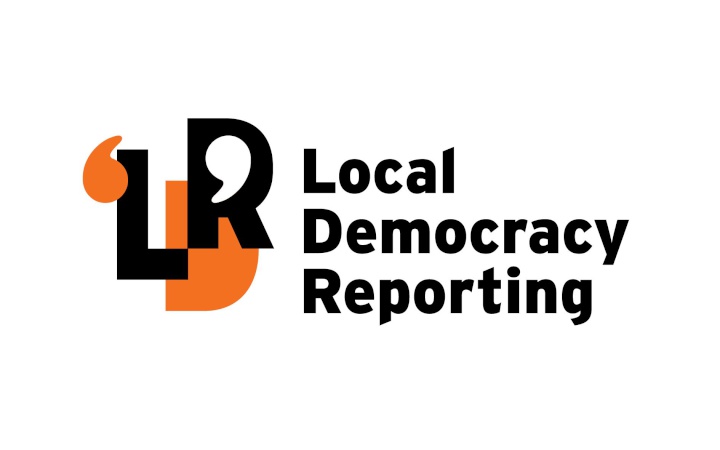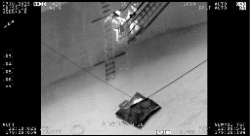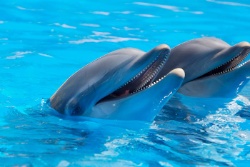May 15, 2025
“If in doubt, opt out now.”
This was the advice former Masterton mayor Lyn Patterson gave councillors at this week’s Local Water Done Well hearing, held at Waiata House.
Although 58% of Masterton submissions were in favour of a Wairarapa-Tararua water services model, some stipulated their support was conditional on there being no standardisation of prices between districts.
About 39% supported a Masterton-only enhanced status quo approach, and about 3% did not support either option.
Patterson, who was one of several submitters who presented to council on Wednesday, said the council should not have limited people’s choices to only two options and was concerned there was no guarantee of non-standardisation once a Wairarapa-Tararua water entity was established.
“Given you have to act in the best interests of present and future Masterton generations, you really don’t have a choice,” she said.
“Please err on the side of caution as there is too much at stake.
“Be bold, be courageous, and if in doubt opt out now and support standalone, unless there is a legal watertight guarantee to no standardisation.”
Amber Craig, who submitted on behalf of Rangitāne o Wairarapa Incorporated, supported the Masterton-only option and said joining with other councils watered down the voice of whānau, hāpu, marae, and iwi.
Meanwhile, Rangitāne Tū Mai Rā Trust, the post-settlement governance entity for Rangitāne o Wairarapa and Rangitāne o Tamaki nui-ā-Rua, made a submission supporting the Wairarapa-Tararua option.
Masterton Ratepayers and Residents Association president Lyn Riley said there was too much uncertainty in choosing the Wairarapa-Tararua option.
The group’s biggest concerns were financial fairness, lack of detail, and loss of local control, she said.
There were “way too many unanswered questions” about governance, cost-sharing, ringfencing, shareholder agreements, and asset control.
“The devil is always in the detail, or in this case, the lack of detail,” Riley said.
Submitter Chris Blunden supported the Wairarapa-Tararua option and said pooling together resources across the districts into one organisation would increase resilience and safeguard resources and staff expertise.
Erica Jar from Sustainable Wairarapa said her organisation supported the Wairarapa-Tararua model in principle but had concerns about the level of uncertainty that came with the option.
Submitter Robbie Hullena supported the Masterton-only option and said standardisation would be a constant threat for Masterton shareholders.
Because of this, and other unknowns, he said a “safe vote” would be for the Masterton-only option.
Submitter Peter Debney said the Wairarapa-Tararua option was the “only affordable option” but also said he wanted to believe standardisation was “not a possibility”.
Submitter Jamie Falloon said the biggest risk in the Wairarapa-Tararua option was standardisation and that the process that had been prescribed by the government and followed by councils was “distinctly average”.
He was uncomfortable with the council agreeing on an idea, binding ratepayers to it, and then negotiating to “see what happens”.
Masterton councillors would deliberate on all submissions on May 21.
The proposal Masterton District Council consulted on was the Wairarapa-Tararua option.
Its consultation document said each council would have different investment requirements and costs of service and that there was no requirement for water charges to be standardised across the districts.
The proposal’s projected costs were based on water charges not being standardised and were an average of $2305 per Masterton connection by Year 10.
The council also included information on pricing over time in its consultation document to show what a standardised cost could look like “compared to the cost under the Proposal without standardised costs”.
This standardised price was $3620 per connection by Year 10.
– LDR is local body journalism co-funded by RNZ and NZ On Air.



 Gordon Campbell: On The Costs Of Regulating Cost, And Burkina Faso As A Role Model
Gordon Campbell: On The Costs Of Regulating Cost, And Burkina Faso As A Role Model Dog Lovers of Monte Cecilia: Locals Challenge Puketāpapa Local Board And Auckland Council’s On-Leash Policy Change For Monte Cecilia Park
Dog Lovers of Monte Cecilia: Locals Challenge Puketāpapa Local Board And Auckland Council’s On-Leash Policy Change For Monte Cecilia Park Maritime New Zealand: Three Rescued In High-Seas Operation After Vessel Abandoned North Of New Zealand
Maritime New Zealand: Three Rescued In High-Seas Operation After Vessel Abandoned North Of New Zealand Health Coalition Aotearoa: Experts Urge Fix As Government Expands Failing Lunch Scheme To Primary Schools
Health Coalition Aotearoa: Experts Urge Fix As Government Expands Failing Lunch Scheme To Primary Schools Helen Clark Foundation: The Helen Clark Foundation Launches Honorary Fellow Programme
Helen Clark Foundation: The Helen Clark Foundation Launches Honorary Fellow Programme Department of Conservation: Call For Public Information On Auckland Marine Mammal Cases
Department of Conservation: Call For Public Information On Auckland Marine Mammal Cases New Zealand Jewish Council: NZ Jewish Council Clarifies Position - Advocating For Safety And Accountability, Not Censorship
New Zealand Jewish Council: NZ Jewish Council Clarifies Position - Advocating For Safety And Accountability, Not Censorship


